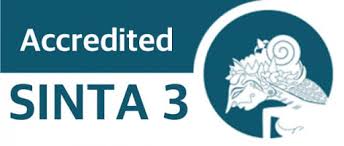Pengembangan Bahan Ajar Fiqih Model Majalah Anak Materi Thaharah Untuk Peningkatan Keefektifan Hasil Belajar
DOI:
https://doi.org/10.54069/attadrib.v4i2.143Keywords:
Fiqh Instructional, Kid Magazine, Learning OutcomesAbstract
The aims of research and development included: 1) Design a magazine model development of teaching materials on the kid magazines model of thaharah material in class I Public Islamic Elementary School 2 Mojokerto. 2) Explain the feasibility of development of teaching materials on the kid magazines model of thaharah material as Instructional materials in class I Public Islamic Elementary School 2 Mojokerto. 3 ) Describe how much the increase of effectiveness of learning in teaching materials developed and applied magazine Instructional materials of Kid Magazines Model of Thaharah Material in class I Public Islamic Elementary School 2 Mojokerto. This type of research was research and development. The resulting product was Kid Magazines Model of Thaharah Material for students of class I Public Islamic Elementary School 2 Mojokerto. The model of development used the development model of Borg & Gall. The results of the development of teaching materials met valid criteria with the results of expert validation of material reached 90.91%, the validation results of design experts reached 89.28%, the results of teacher assessment reached 92.86%, small group trial reached 92.5%, and the test field experiment reached 90.83%. The average score of student learning outcomes of control class reached 87.22 and experimental class reached 78.51. On the results of the t-test using SPSS 16 with a significance level of 0.05 was obtained results tcount> ttable namely 3921> 2:00 meant that H0 was rejected and Ha. This showed that the teaching materials developed effective in improving the effectiveness of student learning outcomes in class I Public Islamic Elementary School 2 Mojokerto.
Downloads
References
Bibliography writing must use the Zotero application for citations and APA 7th (American Psychological Association 7th edition) as a reference style.
Abbitt, J. T. (2011). An Investigation of the Relationship between Self-Efficacy Beliefs about Technology Integration and Technological Pedagogical Content Knowledge (TPACK) among Preservice Teachers. Journal of Digital Learning in Teacher Education, 27(4), 134–143. https://doi.org/10.1080/21532974.2011.10784670
Adha, M. A., Supriyanto, A., & Timan, A. (2019). Strategi peningkatan mutu lulusan madrasah menggunakan diagram fishbone. Tarbawi: Jurnal Keilmuan Manajemen Pendidikan, 5(01), 11–22.
Afif, S. (2010). Manajemen Pembelajaran Full Day School (Studi Kasus di TK Ashabul Kahfi Malang). FIP UNM Malang.
Bustami, Y., & Corebima, A. (2017). The Effect of JiRQA Learning Strategy on Critical Thinking Skills of Multiethnic Students in Higher Education, Indonesia. International Journal of Humanities Social Sciences and Education (IJHSSE), 4(3), 13–22.
Duran, M., & Dökme, ?. (2016). The effect of the inquiry-based learning approach on student’s critical-thinking skills. Eurasia Journal of Mathematics, Science & Technology Education, 12(12), 2887–2908. https://doi.org/doi: 10.12973/eurasia.2016.02311a
El Islami, R. A. Z., Nahadi, N., & Permanasari, A. (2015). Hubungan Literasi Sains dan Kepercayaan Diri Siswa pada Konsep Asam Basa. Jurnal Penelitian dan Pembelajaran IPA, 1(1), 16–25. https://doi.org/10.30870/jppi.v1i1.324
Hartini, S., Firdausi, S., Misbah, M., & Sulaeman, N. F. (2018). The Development of Physics Teaching Materials Based on Local Wisdom to Train Saraba Kawa Character. Jurnal Pendidikan IPA Indonesia, 7(2), 130–137. https://doi.org/10.15294/jpii.v7i2.14249
Juhji, J. (2016). Peningkatan keterampilan proses sains siswa melalui pendekatan inkuiri terbimbing. Jurnal Penelitian dan Pembelajaran IPA, 2(1), 58–70. https://doi.org/10.30870/jppi.v2i1.419
Juhji, J., & Nuangchalerm, P. (2020). Interaction between Science Process Skills and Scientific Attitudes of Students towards Technological Pedagogical Content Knowledge. Journal for the Education of Gifted Young Scientists, 8(1), 1–16. http://dx.doi.org/10.17478/jegys.2020.XX
Koehler, M. J., Mishra, P., Kereluik, K., Shin, T. S., & Graham, C. R. (2014). The Technological Pedagogical Content Knowledge Framework. In J. M. Spector, M. D. Merrill, J. Elen, & M. J. Bishop (Eds.), Handbook of Research on Educational Communications and Technology (pp. 101–111). Springer New York. https://doi.org/10.1007/978-1-4614-3185-5_9
Magesaharani, S., & Ibrohim, B. (2019). Implementasi Pembentukan Karakter melalui Program Boarding School SMP Aardaniah Kota Serang. Tarbawi: Jurnal Keilmuan Manajemen Pendidikan, 5(01), 63–74. https://doi.org/10.32678/tarbawi.v5i01.1852
Mu’izzuddin, M., Juhji, J., & Hasbullah, H. (2019). Implementasi Metode Sorogan dan Bandungan dalam Meningkatkan Kemampuan Membaca Kitab Kuning. Geneologi PAI?: Jurnal Ilmiah Bidang Pendidikan Agama Islam, 6(1), 43–50.
Yuan, H., Kunaviktikul, W., Klunklin, A., & Williams, B. A. (2008). Improvement of nursing students’ critical thinking skills through problem-based learning in the People’s Republic of China: A quasi-experimental study. Nursing & Health Sciences, 10(1), 70–76. https://doi.org/10.1111/j.1442-2018.2007.00373.x
Downloads
Published
How to Cite
Issue
Section
License
Copyright (c) 2021 Benny Angga Permadi

This work is licensed under a Creative Commons Attribution-ShareAlike 4.0 International License.





